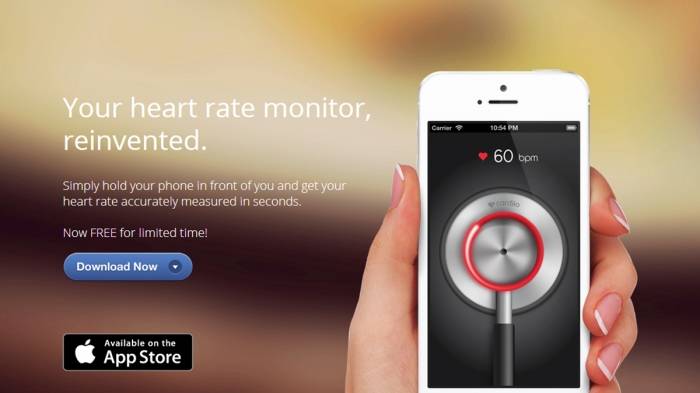
![]()
Your mobile phone already knows where it is, how you’re holding it, what you’re saying to it and how fast you’re moving.
Yet with significant improvements in mobile sensor technology just around the corner, this is only the beginning chapter in the era of self-aware devices and continuous data logging. There’s much more to come.
We’re now used to phones and tablets recognising when they’re being held upside down and flipping the screen accordingly, but even this kind of technology is a relatively new innovation that has only become commonplace in the last four or five years.
You probably used one of the earliest consumer products to showcase these sensors, and it wasn’t a phone at all. It was the Nintendo Wii games console, which had millions of us panicking as we casually tossed a ‘bowling ball’ (remote) at the TV.
Making sense of sensors
You probably know a few of these, but there are so many more sensors packed into your tiny phone. The most obvious are the accelerometer, for measuring movement and orientation, and the gyroscope, for measuring angular rotation across three axes and giving more accuracy to the accelerometer reading.
Location services are taken care of with a magnetometer for detecting magnetic North and some form of GPS chip or a related variant to plot your position on the map.
On top of this there’s the proximity sensor for recognising when you move your phone up to your face during a call and an ambient light sensor for boosting brightness levels in dark environments.
Like every electrical component, these sensors continue to get smaller, more powerful and cheaper. The total cost of all the sensors inside your brand new mobile phone is probably less than a handful of of your local currency, though as with any other hardware there are budget and premium options available.
The list price of the accelerometer in the new iPhone, for example, is $1, so this power doesn’t come at a great cost. Whatever the price though they’ve become an integral part of the mobile experience: imagine a tablet that doesn’t change orientation when you rotate it, or a phone that can’t give you directions back home.
The cutting edge
As technology advances, there are yet more sensors marking their ground. Apple’s most recent iPhones and iPads come with motion coprocessors, which add to the motion sensing capabilities of these devices. In practice, they can tell the difference between walking and driving, and take certain actions (such as switching off Wi-Fi) if you haven’t moved for a while.
If you’re on a train, these chips can be used to tell your phone or tablet to stop trying to attach to public networks as they whizz by. Fitness apps, meanwhile, can access accurate data about your movements with no need for a separate wristband.
Samsung isn’t shy of throwing everything it can into a handset, and this is certainly the case when it comes to the sensors packed into its handsets in recent years: the Galaxy S6includes a total of nine sensors to keep an eye on you.
The latest flagship can scan your fingerprint, measure your heart rate, check the current temperature, and more besides. The collected data can be accessed through the S Health app or a third-party tool, enabling the phone to keep an eye on the state of the environment around you.
There’s also a barometer for measuring atmospheric pressure and a gesture sensor that detects hand movements through infrared rays.
So much for the here and now: what about the months and years to come? In short, more sensors and greater accuracy.
Emiliano Miluzzo has spent many years specialising in mobile sensing systems and big data analysis at companies such as AT&T and Apio. “The trend of adding more sensors to mobile devices will continue,” he told us.
“It would be great to have air and water quality sensors, some forms of medical sensing, 3D/stereo cameras, even radar and sonar… the wishlist could certainly grow if we could have an understanding of how quickly sensor miniaturisation will proceed.”
Sensory overload
How would you like a phone that could track your heart rate and emotional state, perhaps putting on some soothing music as soon as you start to get anxious?
This sort of technology is on the way, but it’s not here yet: a couple of years ago semiconductor specialist Kaivan Karimi told the GigaOM Mobilize Conference that human feelings could be read by sensors costing just a few pounds.
“Your device will get to read your emotions,” he said. “That means you can track people’s emotions remotely… your device will know you significantly better than you do.”
We’re still waiting for a phone that knows when you’re happy or sad – but Google Now and Siri are certainly getting there.
The microelectromechanical systems (MEMS) built into our phones are made of silicon, but scientists are now experimenting with MEMS running on an organic polymer more suitable for implanting in the human body.
Once the cost and time taken to manufacture these components comes down, we could be able to monitor health and activity from inside our own bodies. They could even be used to control bionic limbs.
UV light sensors are also heading towards the mainstream – you might not know it but there’s one inside the Galaxy Note 4. Find out how much sun cream you need, or how clean your hands really are, or how much you’ve had to drink, all courtesy of your phone.
Imagine the difference it would make to a check up at the doctor’s if you had two months’ worth of data on file rather than relying on your own memory and a quick five minute conversation. Phones can now track the basics of our activities (through apps such asGoogle Fit) and will become more comprehensive in time.
On a broader level, disease and health patterns can be tracked more accurately across countries and continents, something Apple’s ResearchKit points towards.
Researchers at the University of California, Berkeley have built a working prototype of a pollution sensor small enough to fit inside a mobile phone, giving governments and health officials the opportunity to measure smog and dangerous chemicals across cities (as well as giving you a warning when it’s time to don a face mask).
Right now this kind of monitoring requires a separate device but it won’t be long before the tech is inside our smartphones.
Meanwhile, Antonio D’Alessandro and Giuseppe D’Anna, seismologists at the National Institute of Geophysics and Volcanology in Italy, have run tests on iPhones to demonstrate how mobile phones could be used to detect earthquakes.
More recently, scientists from the US Geological Survey have been looking at using crowdsourced GPS data as some kind of early warning system for said ground-shakers.
The sensors within our handsets need to improve, but eventually they could act as early warning systems and get aid to those in need more quickly.
As Emiliano Miluzzo puts it: “Governments could rely on crowdsourced 24/7 pollution level measurements, people in developing countries could rapidly check the quality of their water, EEG headsets could let people control their devices simply through their thoughts, and radar and sonar sensing could let people be more aware of their surroundings.”
“Not only will users get immediate answers to their problems, but governments too will be able to run their infrastructures more efficiently.”
The smarter home
As sensors become smarter, so will all of the other gadgets and equipment in our homes. The sensor-packed smartphone of the future won’t work in isolation, but as part of a larger network of devices, whether it’s the thermostat at home or the Wi-Fi enabled lamppost out on the street, each with their own integrated miniature monitoring components.
STMicroelectronics is one of the companies leading the charge in sensor development. It’s working on technology that combines readings from an accelerometer, magnetometer, pressure sensor and Wi-Fi scanner to accurately pinpoint your location indoors.
That means whether you’re trying to find a bookshop in a shopping centre or a restaurant in a hotel, the tech can make life much easier when you can’t get a GPS lock. The recently introduced Wi-Fi Aware standard also lets phones communicate directly – and identify where they are – with no internet or GPS access
Emiliano Miluzzo’s firm Apio is working on a system to combine data from a phone’s accelerometer, magnetometer, gyroscope and GPS to make calculations about your driving: “We invented complex algorithms where machine learning reasoning, signal processing, engineering and computer science come together to let the phone know when you are distracted or in a crash.”
“Our mission is to turn your phone into something that can possibly coach you but also save your life. Your virtual companion on the road.”
A smartphone that can sense where you are indoors, how you’re driving and what’s in your internet-enabled fridge opens up all kinds of possibilities – imagine your hotel room lights and heating turning on when you’re on your way (something you can already do at home with the likes of Philips Hue and Nest).
Then there’s your weekly trip to the gym — wearable technology such as theGymWatch can detect how well your workout is going, while most smartwatches have some sort of heart rate monitor built into the system to keep an eye on how healthy you are throughout the day.
And this tech is going to keep getting smarter, and it shouldn’t take long before gym equipment can automatically adapt to your fitness levels (getting heavier or faster when needed) without any input from you.
Let’s not forget gaming either — the technology already exists to tell when you’re looking away from the screen, and once mobile cameras are smart enough to detect your mood, then the gameplay could adapt accordingly to make life easier or slow you down.
As 3D and stereo cameras become the norm, so gesture and facial recognition will improve.
Brave new worlds
A final look ahead from Emiliano Miluzz “What’s exciting is that smartphones and tablets will turn into our personal assistants, ready to sense our surroundings and take actions on our behalf.
“To achieve this, new and advanced sensing capabilities will be always needed — a process that hardware miniaturisation will only accelerate. And it’s fascinating to see how researchers and developers exercise their creativity to come up with unthinkable apps and ideas with the sensors available today.
“We measure this by the very large community participation in what it is known as smartphone sensing research.”
“Moving forward, I think that somewhat still under-explored sensors are the radio interfaces,” he adds. “Wi-fi and Bluetooth provide great means to realize local interaction, discovery, quick localized communications.”
Phone sensors offer portability backed up with computing power and the ability to report back from the remotest of locations. Whether it’s monitoring your blood sugar levels or warning about an impending avalanche, nothing is beyond the realms of possibility when it comes to future innovations.
Smartphones have already revolutionised many aspects of our lives, and they’re only just getting started.
[Source:- Tech rader]











